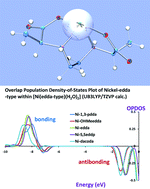Nickel(ii) in chelate N2O2 environment. DFT approach and in-depth molecular orbital and configurational analysis†
Abstract
The O–N–N–O-type tetradentate

* Corresponding authors
a
Department of Chemistry, Faculty of Science, University of Kragujevac, Kragujevac, Serbia
E-mail:
zmatovic@kg.ac.rs
b Stratingh Institute for Chemistry and Chemical Engineering, University of Groningen, Nijenborgh 4, NL-9747 AG Groningen, The Netherlands
The O–N–N–O-type tetradentate

 Please wait while we load your content...
Something went wrong. Try again?
Please wait while we load your content...
Something went wrong. Try again?
S. R. Trifunović, V. D. Miletić, V. V. Jevtić, A. Meetsma and Z. D. Matović, Dalton Trans., 2013, 42, 13357 DOI: 10.1039/C3DT51099A
To request permission to reproduce material from this article, please go to the Copyright Clearance Center request page.
If you are an author contributing to an RSC publication, you do not need to request permission provided correct acknowledgement is given.
If you are the author of this article, you do not need to request permission to reproduce figures and diagrams provided correct acknowledgement is given. If you want to reproduce the whole article in a third-party publication (excluding your thesis/dissertation for which permission is not required) please go to the Copyright Clearance Center request page.
Read more about how to correctly acknowledge RSC content.
 Fetching data from CrossRef.
Fetching data from CrossRef.
This may take some time to load.
Loading related content
